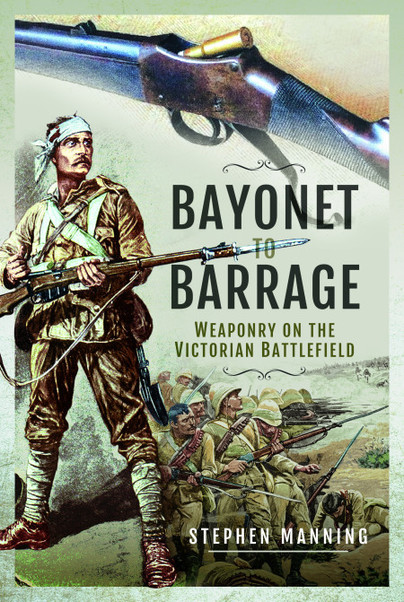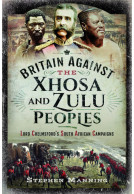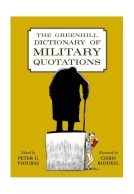Bayonet to Barrage (Hardback)
Weaponry on the Victorian Battlefield
Imprint: Pen & Sword Military
Pages: 240
ISBN: 9781526777218
Published: 15th September 2020
(click here for international delivery rates)
Order within the next 5 hours, 25 minutes to get your order processed the next working day!
Need a currency converter? Check XE.com for live rates
| Other formats available | Price |
|---|---|
| Bayonet to Barrage Paperback Add to Basket | £15.99 |
| Bayonet to Barrage eBook (12.7 MB) Add to Basket | £6.99 |
How did technical advances in weaponry alter the battlefield during the reign of Queen Victoria? In 1845, in the first Anglo-Sikh War, the outcome was decided by the bayonet; just over fifty years later, in the second Boer War, the combatants were many miles apart. How did this transformation come about, and what impact did it have on the experience of the soldiers of the period? Stephen Manning, in this meticulously researched and vividly written study, describes the developments in firepower and, using the first-hand accounts of the soldiers, shows how their perception of battle changed.
Innovations like the percussion and breech-loading rifle influenced the fighting in the Crimean War of the 1850s and the colonial campaigns of the 1870s and 1880s, in particular in the Anglo-Zulu War and the wars in Egypt and Sudan. The machine gun was used to deadly effect at the Battle of Omdurman in 1898, and equally dramatic advances in artillery took warfare into a new era of tactics and organisation.
Stephen Manning’s work provides the reader with an accurate and fascinating insight into a key aspect of nineteenth-century military history.
"An interesting read in how weapons and tactics change as do enemies. Showing the British Army at its best in expanding the British Empire during the Victorian period."
Ordnance Society - Newsletter No.134, 07/2021
Bayonet to Barrage is thus an excellent survey of the Victorian battlefield and should be enjoyed by anyone interested in Britain’s pursuit and maintenance of Empire through military success.
Beating Tsundoku
Read the full review here
Review by Jason Hubbard
Irregular magazine, issue 14 Volume 2/Winter 2020
... in general this is a very well researched and written piece of military history, that many will find interesting. Especially those with a fascination in military history and Victorian history. It will also be a valuable read for anyone who war games this period, or anyone thinking of delving into this period of gaming. It will make a nice Christmas present for anyone with those interests.
Editor's Choice
The Armourer, February 2021
Here's an example of how to make a potentially stuffy technical exercise come alive.
As someone who finds anything to do with the Zulu Wars particularly fascinating, Stephen's book is a welcome addition to my library. The Victorian era was the last in which, although horrific, warfare was conducted along more gentlemanly lines. Having said that, the introduction of automatic weaponry such as machine guns was an obvious change, and ultimately led to many more casualties. Absolutely enthralling.
Books Monthly
A smashing read.
Army Rumour Service (ARRSE)
Read the full review here
It is really interesting to read as the weapons and tactics change as the enemies do. I think this is a great read for anyone interested in the Victorian period and the British Army of the time.
Medieval Sword School
Read the full review here
I have been fascinated by the British Army since a young age, but the weaponry of the Victorian British Army has never particularly interested me and, for that matter, even after having read this book, I still wouldn't be able to tell the difference between a Martini Henry and a Lee Enfield at twenty paces. That's not to say that this book isn't good; it is, very. It's just that I don't have the forensic knowledge that author Stephen Manning has. It is one thing to have that knowledge though, and quite another to be able to write about the subject in a compelling manner that makes it interesting for people like me.
Paul Nixon
Although it's not 'fashionable' to say so now, the British Army of the Victorian and early Edwardian eras did a sterling job of maintaining and expanding the British Empire through a combination of grit, determination, stiff-upper-lipiness and unwavering discipline. The weaponry they used, certainly provided the back-up, and in this book we can read about its evolution from Sobraon in 1846 through to the Second Anglo-Boer War of 1899-1902. The author obviously knows his stuff and there are copious references to published works on the subject as well as a comprehensive bibliography.
As Stephen Manning concludes, "From the start of Victoria's reign in 1837 when the bayonet still decided the success of an offensive, to the end of 1901, when artillery firing from hidden positions could eliminate enemy positions many miles away, technological advances altered completely the size and nature of the battlefield."
Worth finding space for on the bookshelves.
Read the full review here
About Dr Stephen Manning
Dr Stephen Manning is an Honorary Research Fellow in the History Department at the University of Exeter and has made a special study of Victorian military history. In addition to publishing many articles in academic journals he has written several books including Evelyn Wood VC: Pillar of Empire, Soldiers of the Queen, Quebec: The Story of Three Sieges, The Martini-Henry Rifle, Bayonet to Barrage: Weaponry on the Victorian Battlefield and Britain at War with the Asante Nation 1823-1900: ‘The White Man’s Grave’.




















